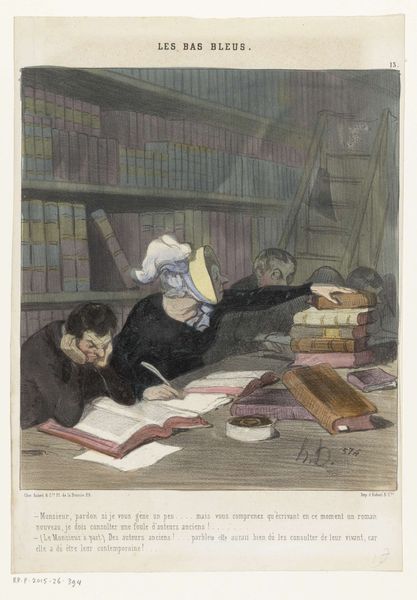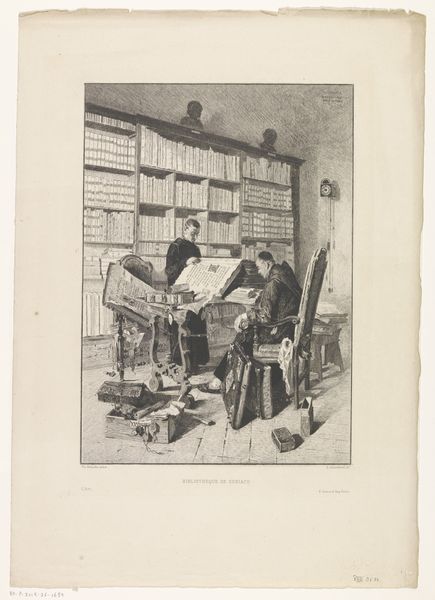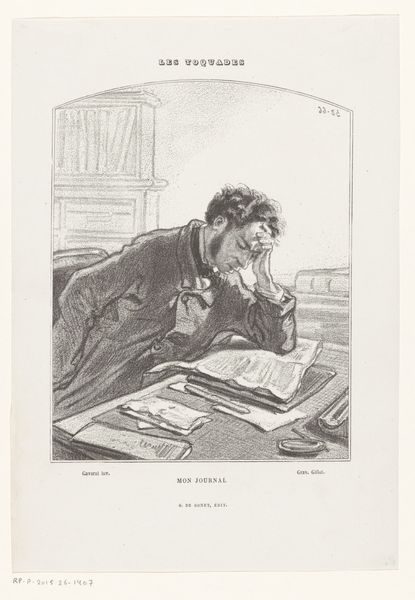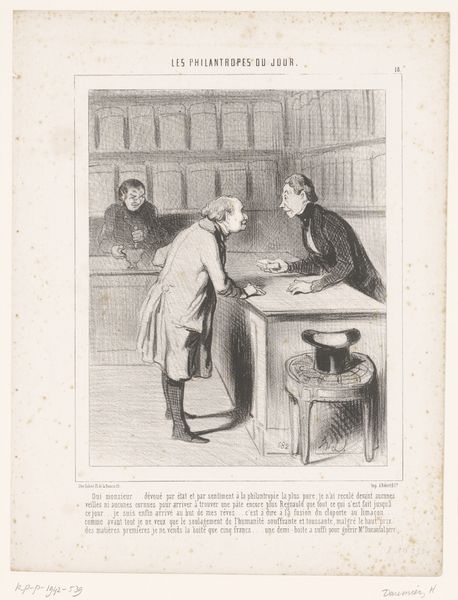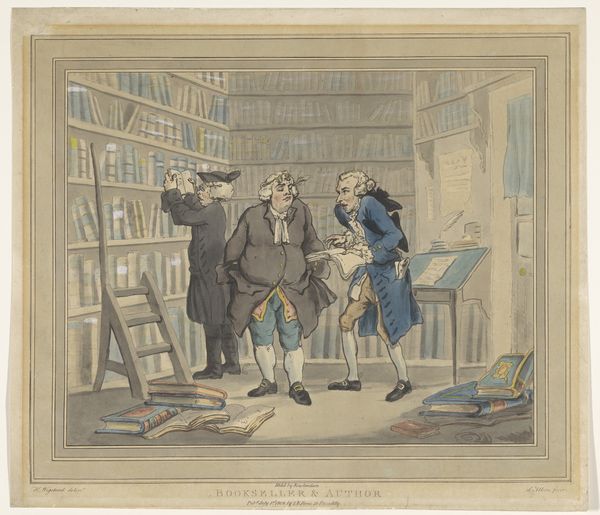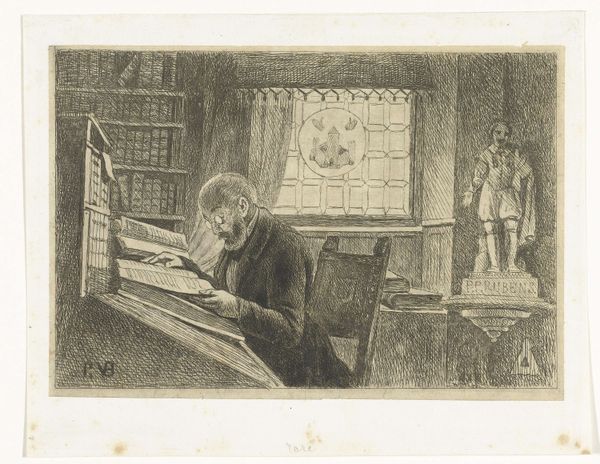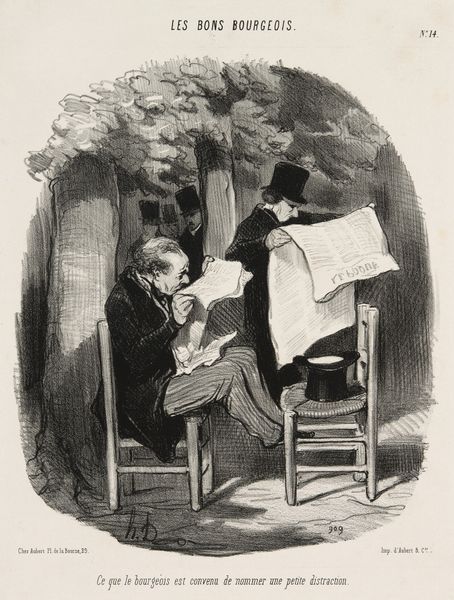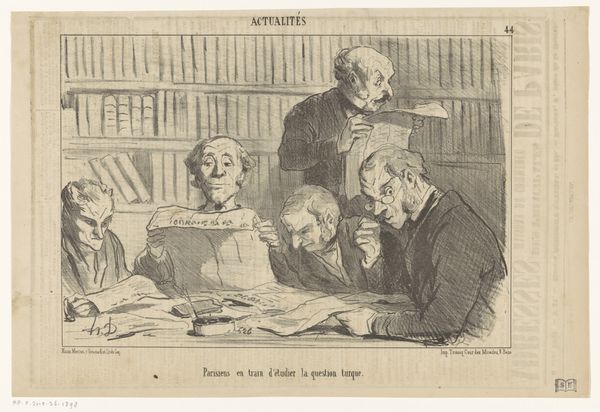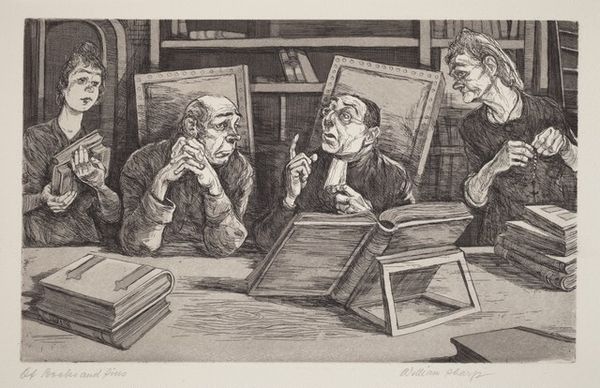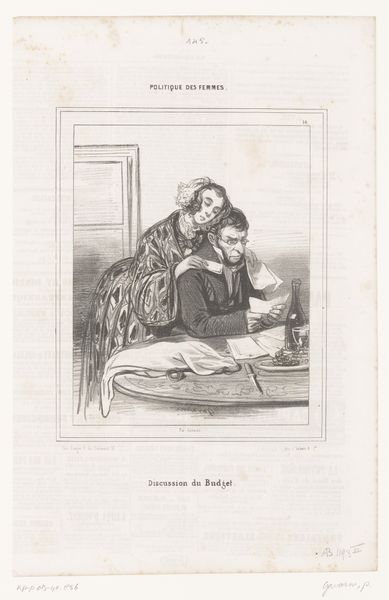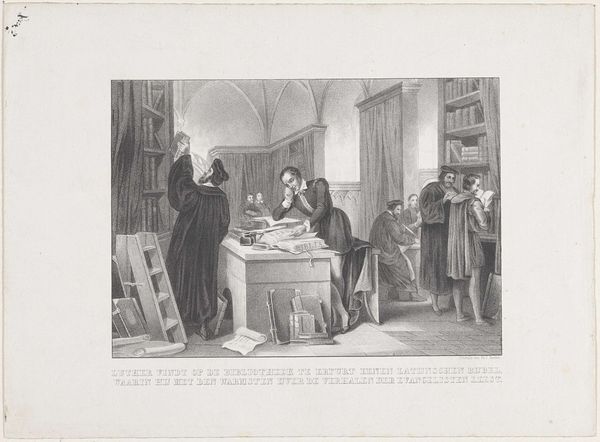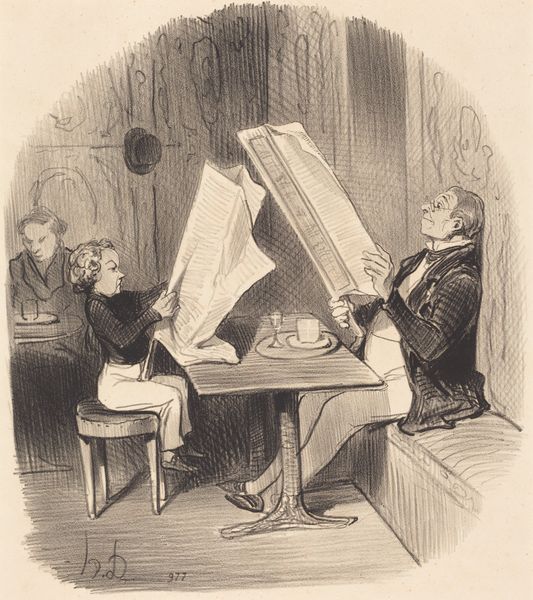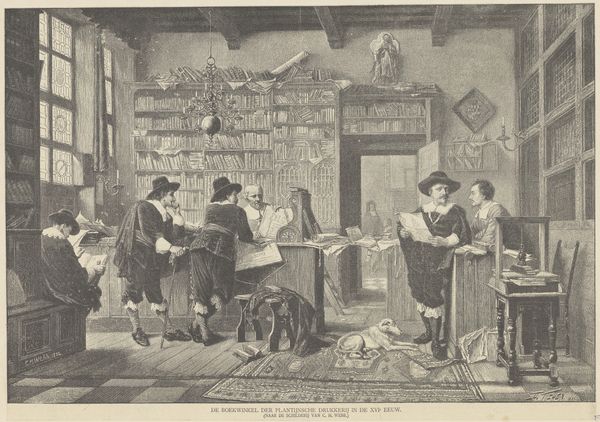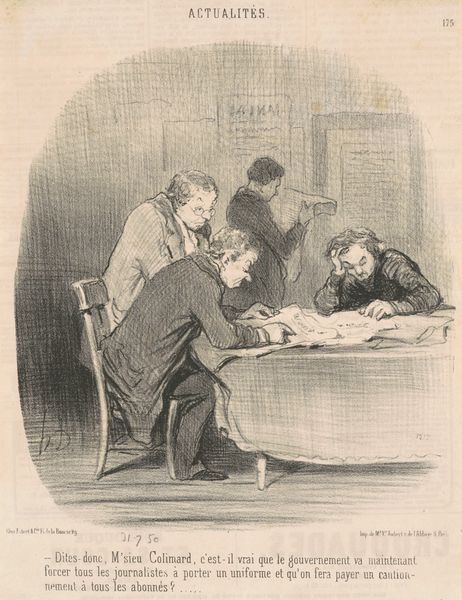
drawing, lithograph, print, pen
#
portrait
#
drawing
#
lithograph
# print
#
caricature
#
caricature
#
cartoon sketch
#
pen
#
portrait drawing
#
genre-painting
Copyright: National Gallery of Art: CC0 1.0
Curator: Daumier's lithograph, "Monsieur, pardon si je vous gêne un peu…," created in 1844, presents us with a curious scene. My first impression is of organized chaos—the overwhelming presence of books and ladder. What catches your eye? Editor: Immediately, it's the dynamic composition. Daumier’s masterful use of line creates an unsettling yet compelling rhythm across the scene. Note how the sharp angles of the faces contrast with the soft curves of the books. Curator: Yes, and it's crucial to consider that this print was published in "Le Charivari," a satirical newspaper. Daumier often used his art as social commentary, critiquing the bourgeoisie of his time. Here, we see the material culture—the endless accumulation of knowledge—perhaps satirizing the pretense of intellect. Editor: The materiality of the print itself plays a crucial role in understanding the artwork. Lithography, a process involving drawing on stone and then printing, allows for nuanced gradations of tone and texture, which we clearly see in the details of the faces. Consider also the significance of distributing it as a newspaper insert; mass production renders a wide viewership, reaching the very bourgeoisie it parodies. Curator: Indeed, that interplay is what's fascinating. This genre painting speaks to the availability of knowledge and even mocks at it as if its mass availability renders one incapable of truly capturing intellect. Each face is deeply personal as if its characters represent something more extensive than individuals in a room. Editor: The confined space intensifies the sense of intellectual struggle. We see visual cues everywhere and in everyone, hinting at an atmosphere of quiet desperation within this library. How do you view the symbolism present in these items surrounding each character? Curator: To me, it's not just a quest for intellectual satisfaction, but a visual representation of societal aspirations tied to class. Daumier critiques those consumed by upward mobility, showcasing their immersion within environments of wealth, intellect, and influence as mere backdrops in place of genuine intent. The message becomes clear when viewers take note of his recurring themes around poverty, politics, and social status, suggesting how even knowledge is becoming something that's being owned and privatized. Editor: A potent reminder that artistic genius often lies not only in the “what” but also the “how” and the “why.” His art persists by pushing boundaries in print making and forcing viewers into recognizing cultural biases as much as human fallibilities that persist throughout every era of knowledge making.
Comments
No comments
Be the first to comment and join the conversation on the ultimate creative platform.
